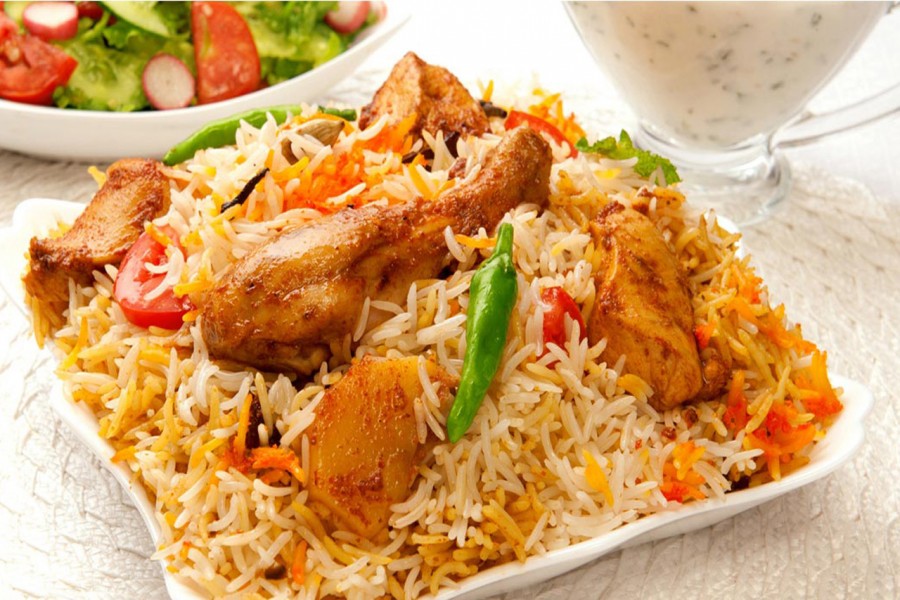Suppose it is the annual function day in the school. What can be the most possible lunch? Of course, biryani.
Or, suppose, you are wandering in the alleys of Puran Dhaka. What would be the possible lunch you are going to eat? It’s biryani again.
Biryani has become a household name in the subcontinent. Even, today there are expensive restaurants that are basically serving only one type of item, biryani, and still are very popular.
While sucking soft and smooth marrows from the bones of the meat of your favourite biryani, have you ever thought, how this mouthwatering dish came to Bangladesh? Ethnically, is it our own? Or it came from somewhere else?
Well, the word ‘Biryani’ originated from the Persian words ‘Birian’ and ‘Birinj.’ Birian refers to something that is fried before cooking, whereas Birinj is the Persian word for rice.
Taking names as the first identity, most people think that biryani is Persian food. The food travelled to the subcontinent with the Mughals in the 15th century and thus developed and settled here (probably for eternity, considering its popularity!).
But, long before the Mughals came to the Indian subcontinent, there used to dish similar to biryani.
In Tamil, there is the reference of a dish named ‘Oon Soru,’ which is almost as old as a couple of thousand years. This Oon Soru used to be made of rice, meat, ghee, coriander, turmeric, pepper, bay leaf and many more.
However, whether biryani has a subcontinental origin or not, the fact is widely accepted that the development of biryani was made by none but the Mughals.
There is a myth related to biryani, centring Mumtaj–after whose name the Tajmahal was named, wife of the famous Mughal ruler Shahjahan.
Once, while visiting the barracks, noticing the unhealthy soldiers, she ordered the chef to create a dish with meat and rice for the soldiers. The chef also added other spices and cooked the dish over a wood fire.
Some also say biryani was brought to the subcontinent by Taimur long, the famous Turk-Mongol emperor in the late 14th century.
On its journey of 500 years, biryani was modified several times and now has several variants.
For example, The Mughlai Biryani contains perfectly spiced meat and rice carrying the aroma of kewra water. This can be said to be an ancestor of today’s Kacchi biryani.
There is also Lucknow Biryani, known as the ‘Pukki Biryani.’ This variant is made of separately cooked meat and rice, which are later layered in a copper vessel. This is also called Awadhi Biryani, because it was modified by the nawabs of Awadh.
Kolkata biryani is lighter on spice and cooked with pieces of brown fried potatoes. The meat is marinated mainly with yoghurt. The meat and rice are separately cooked. This particular biryani was invented by Nawab Wajid Ali Shah.
Hyderabadi Biryani was mainly influenced by Emperor Aurangzeb after he became the ruler of Hyderabad. The speciality of the dish is the usage of aromatic saffron.
Apart from these, there are other variants like Bombay biryani, Bangalorean biryani, Thalassery biryani and so on, fulfilling the appetite of people from different regions.


